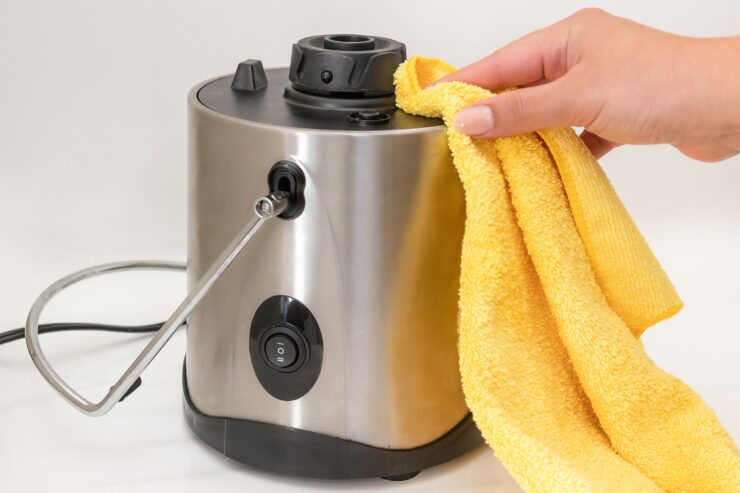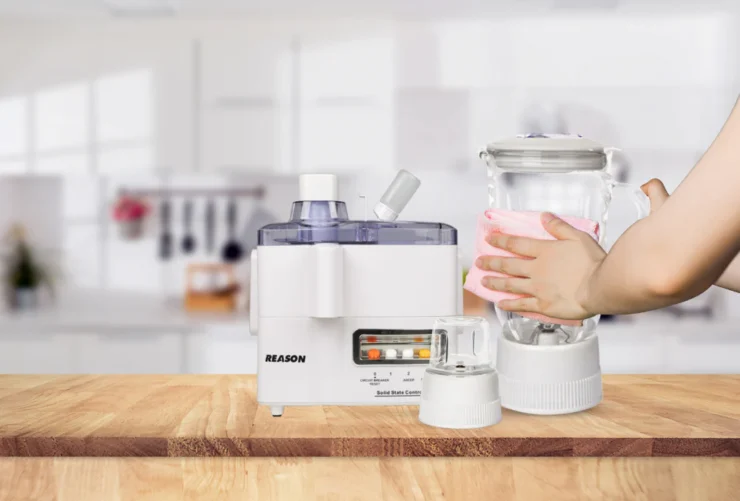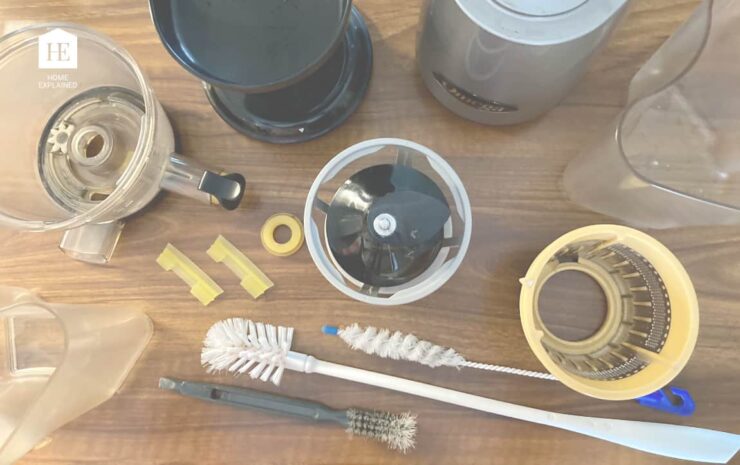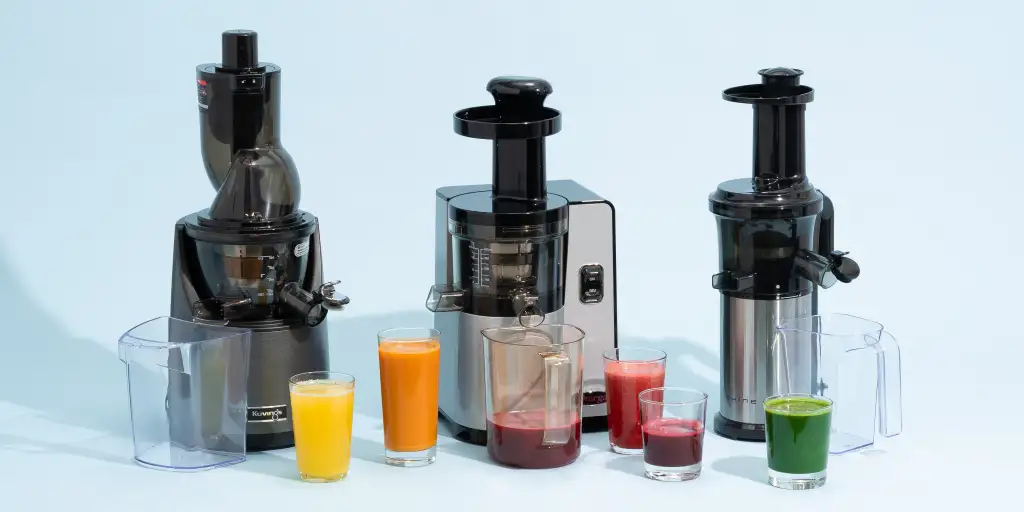Juice is a fantastic method to increase the amount of fruits and vegetables in your diet and have access to several health advantages. However, it is crucial to routinely clean and maintain your juicer in order to retain optimal performance and cleanliness.
Regardless of the type or brand of juicer you own, be it an Oster juicer or any other, this guide offers advice on cleaning it and producing tasty, fresh juices.
Cleaning Your Juicer

- Unplug Your Juicer: Before cleaning your juicer, make sure it is unplugged to prevent any accidents.
- Disassemble: Remove all removable parts of the juicer. This includes the juice collector, pulp container, and any other attachments that came with it. Make sure to read the user manual to ensure you’re correctly disassembling your juicer.
- Rinse the Removable Parts: Rinse all removable parts with warm water. Use a soft-bristled brush to scrub away any pulp or juice residue that may be stuck to the parts. Make sure to clean the crevices and edges of the parts.
- Soak the Removable Parts: If your juicer is particularly dirty, you may want to soak the removable parts in warm soapy water for a few minutes before rinsing them.
- Clean the Motor Base: Wipe the motor base with a damp cloth. Do not immerse the motor base in water, as it may cause damage to the electrical components.
- Dry the Removable Parts: Once you’ve cleaned the removable parts of your juicer, make sure to dry them completely before reassembling it.
Maintaining Your Juicer

- Clean Your Juicer Regularly: To maintain your juicer’s optimal performance, it’s important to clean it regularly. After each use, rinse the removable parts with warm water and dry them completely before reassembling it.
- Use Soft Fruits and Vegetables: To prevent damage to the blades of your juicer, use soft fruits and vegetables such as oranges, grapes, and tomatoes. Hard fruits and vegetables such as carrots and apples may cause damage to the blades.
- Cut Fruits and Vegetables into Smaller Pieces: To prevent clogging and damage to the blades of your juicer, cut fruits and vegetables into smaller pieces before juicing them.
- Don’t Overload the Juicer: To prevent the juicer from overheating and causing damage to the motor, don’t overload it with too many fruits and vegetables at once. Instead, juice smaller batches and wait for it to process the fruits and vegetables before adding more.
- Replace Worn Parts: Over time, the blades and other parts of your juicer may become worn and may need to be replaced. Make sure to read the user manual for instructions on how to replace parts and order replacement parts from the manufacturer if necessary.
- Store Your Juicer Properly: When not in use, store your juicer in a dry place away from heat and moisture. Make sure all removable parts are dry before storing them to prevent mold and mildew from growing.
Additional Tips And Tricks For Cleaning And Maintaining Your Juicer

- Use Lemon Juice: To remove any stubborn stains or odors from your juicer, you can use lemon juice. Apply lemon juice to a cloth or sponge and wipe the affected area. Rinse the area with warm water and dry it thoroughly.
- Use Baking Soda: Baking soda is another effective cleaning agent that can be used to clean your juicer. Mix baking soda and water to create a paste and apply it to the affected area. Let it sit for a few minutes before rinsing it with warm water and drying the area.
- Use a Toothbrush: A toothbrush can be used to clean hard-to-reach areas of your juicer, such as the corners and crevices. This is especially helpful for removing any stubborn pulp or juice residue that may have accumulated over time.
- Use Vinegar: Vinegar is a natural cleaning agent that can effectively remove any buildup or residue from your juicer. Mix equal parts of vinegar and water and soak the removable parts in the solution for a few minutes before rinsing them with warm water and drying them thoroughly.
- Use Dish Soap: A mild dish soap can also be used to clean your juicer. Add a few drops of dish soap to warm water and soak the removable parts in the solution for a few minutes before rinsing them with warm water and drying them thoroughly.
Clean After Use
- Clean Your Juicer Immediately: It’s important to clean your juicer immediately after use to prevent any buildup or residue from hardening and becoming more difficult to remove. If you’re not able to clean it immediately, rinse the removable parts with warm water to prevent any residue from drying and hardening.
- Use a Soft Cloth: When cleaning your juicer, make sure to use a soft cloth or sponge to prevent any scratches or damage to the surfaces.
- Use a Food Scraper: A food scraper can be used to remove any stubborn pulp or juice residue from your juicer. Gently scrape the affected area with the food scraper, being careful not to scratch the surfaces.
- Use a Strainer: To prevent any pulp or seeds from getting stuck in your juicer, use a filter to strain the juice before pouring it into a glass. This will also help to remove any foam or froth that may have accumulated during the juicing process.
- Use Cold Water: When cleaning your juicer, use cold water instead of hot water as hot water can cause any residue or buildup to harden and become more difficult to remove.
Conclusion
In conclusion, clean and maintain your juicer is an important part of owning it. By following these tips and tricks, you can ensure that it remains in optimal condition, producing delicious and healthy juices for years to come. Regardless of the brand or type of juicer you own, make sure to read the user manual for specific instructions on cleaning and maintenance. With proper care and attention, your juicer can be a valuable tool in helping you to maintain a healthy lifestyle.

